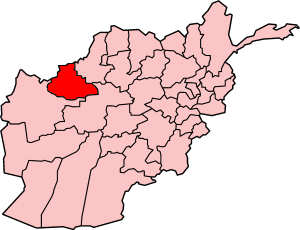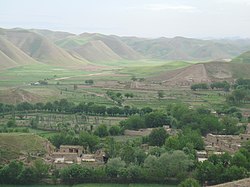Find Out All About Badghis

Badghis is one of the thirty-four provinces of Afghanistan. It is located on the northwest of Afghanistan, between the Murghab and Hari Rud rivers, extending as far northward as the edge of the desert of Sarakhs. The province was carved out of portions of Herat and Meymaneh provinces in 1964 and has a total area of 20,591 km². Its name is from Persian Bâdkhiz meaning "where the winds arise" or "home of the winds".
The province has a mixed population of Uzbeks, Turkmen, Tajiks and Pashtuns and is counted as one of the most underdeveloped of the country's 34 provinces. Agriculture is the main source of people's income and the existence of Murghab and Hari Rud rivers makes the available land suitable for cultivation.
Qala-I-Naw, a small town half-way between Shiberghan and Herat serves as the provincial center. Badghis is home to what some say the first Persian poet, Hanzala Badghisi.
The districts of Badghis are:
| District | Area | Population |
|---|---|---|
| Ab Kamari | n/a | n/a |
| Ghormach | n/a | 34,455 |
| Jawand | n/a | 46,403 |
| Muqur | n/a | n/a |
| Murghab | n/a | 63,798 |
| Qadis | n/a | 55,727 |
| Qala-I-Naw | n/a | 88,032 |
Economy and Culture
Recent History
The province was one of the last captured by the Taliban in their military offensive previous to the American invasion in 2001. Even after their official takeover of the province, the largely Uzbek and Turkmen population of the province never welcomed the Pashtun Taliban. The province was quickly retaken by Northern Alliance forces as the United States initiated hostilities, which was followed by a brutal cleansing of the Pashtun minority in the province.
Various influential warlords have traded control of the province in recent years, including: Abdul Malik, Rashid Dostum, Juma Khan and Ismail Khan. During the fight against the Taliban, the Northern Alliance commanders received military aid from Shia Iran, fearful of the Sunni Taliban. In one notable incident, Malik temporarily switched his allegiances from Dotsum, allowing the Taliban to gain control of the province.
Currently, like most of northern Afghanistan, armed commanders still exert considerable influence over the province, often running private jails, seizing land, and controlling the opium poppy harvest. The province has been relatively peaceful since the full of the Taliban, notwithstanding sporadic conflicts between rival warlords.
At the province is a Provincial Reconstruction Team, which is led by Spain.

